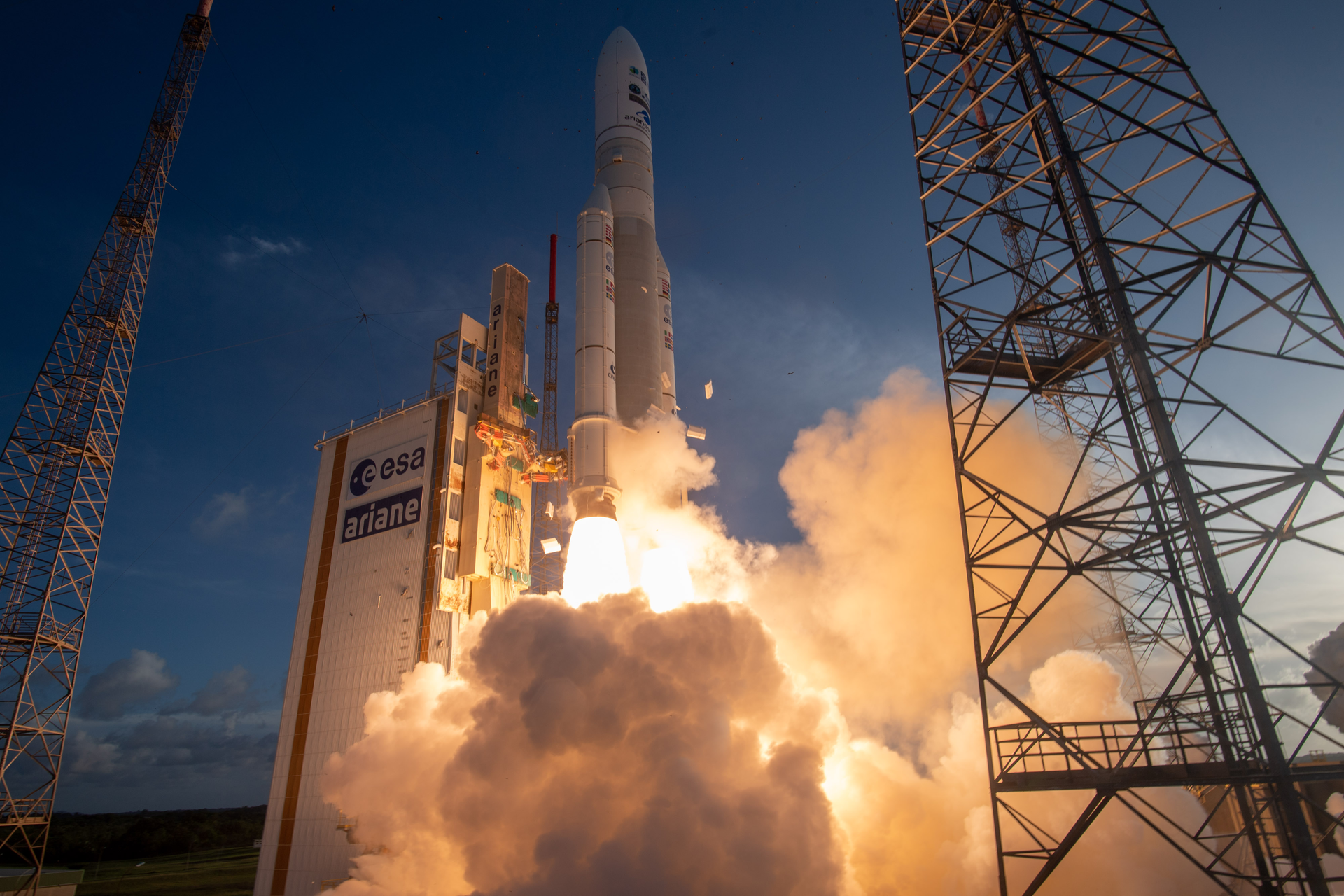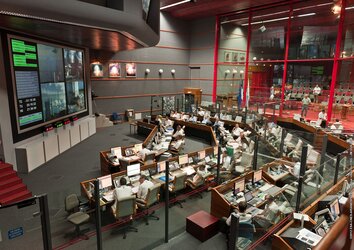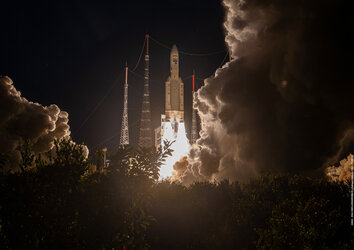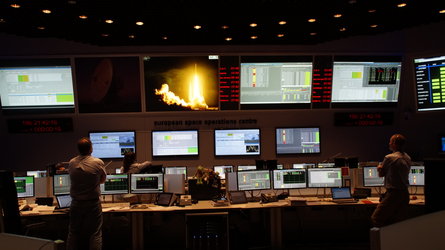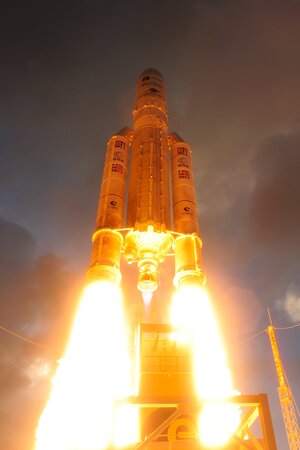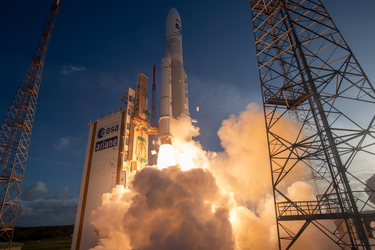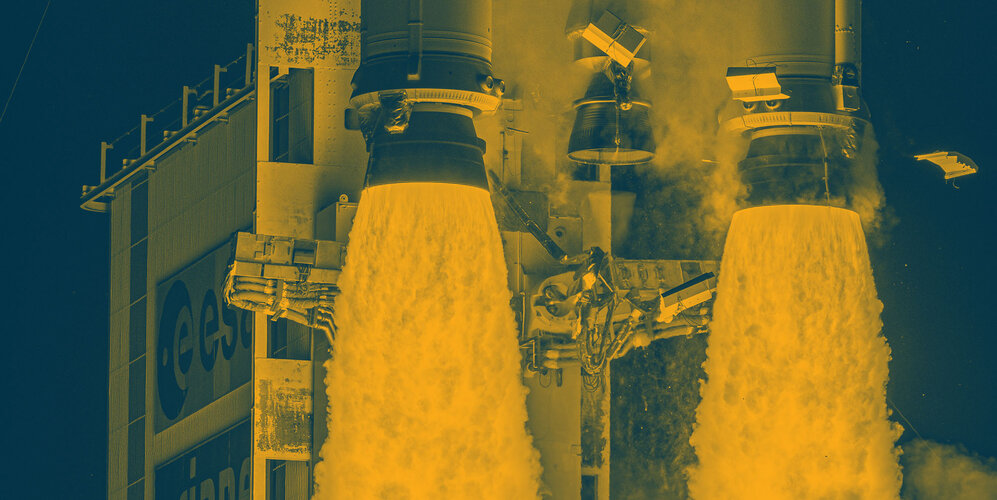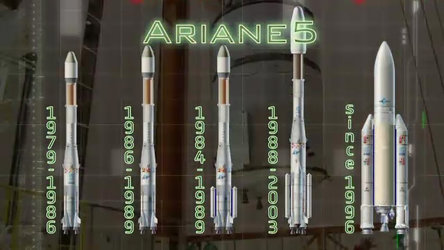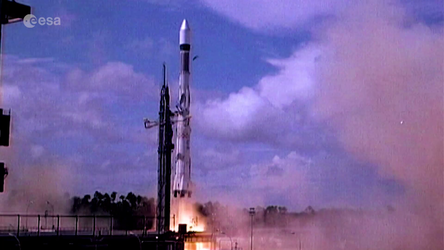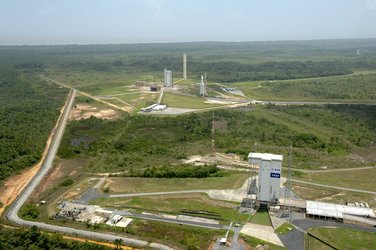Ariane 5
Ariane 5 was Europe’s principal launch system for more than a quarter century, flying 117 times between 1996 and 2023 from Europe’s Spaceport in French Guiana. Notable payloads include ESA’s comet-chasing Rosetta mission, a dozen of Europe’s Galileo navigation satellites – orbited by just three launches – and the James Webb Space Telescope. Ariane 5’s final ESA mission sent Juice on its way to explore Jupiter and its icy moons.
This heavy launcher more than doubled the mass-to-orbit capacity of Ariane 4, which flew from 1988 until 2003. Like its predecessor, Ariane 5 was a favourite of the telecommunications industry with its need to put large payloads into very high geosynchronous orbits. With its increased capacity, Ariane 5 was able to orbit two large telecommunications satellites on a single launch, or to push very large payloads into deep space.
Where Ariane 1, 2 and 3 (1979-1989) and Ariane 4 (1988-2003) were closely related, the larger and more powerful Ariane 5 was developed essentially as an all-new launch system. From 1985, ESA Member States initiated this programme with a view to participating in the International Space Station (ISS) and also launching Hermes, a European crewed spaceplane concept. The Hermes project was later abandoned, though Ariane 5’s legacy includes having delivered to the ISS Europe’s series of five Automated Transfer Vehicle resupply craft.
Ariane 5 variants included Ariane 5G, Ariane 5G+, Ariane 5GS and Ariane 5 ES. The most-used version was Ariane 5 ECA, launched 84 times since 2002 and exclusively from 2019.
For more information download the Ariane 5 media kit

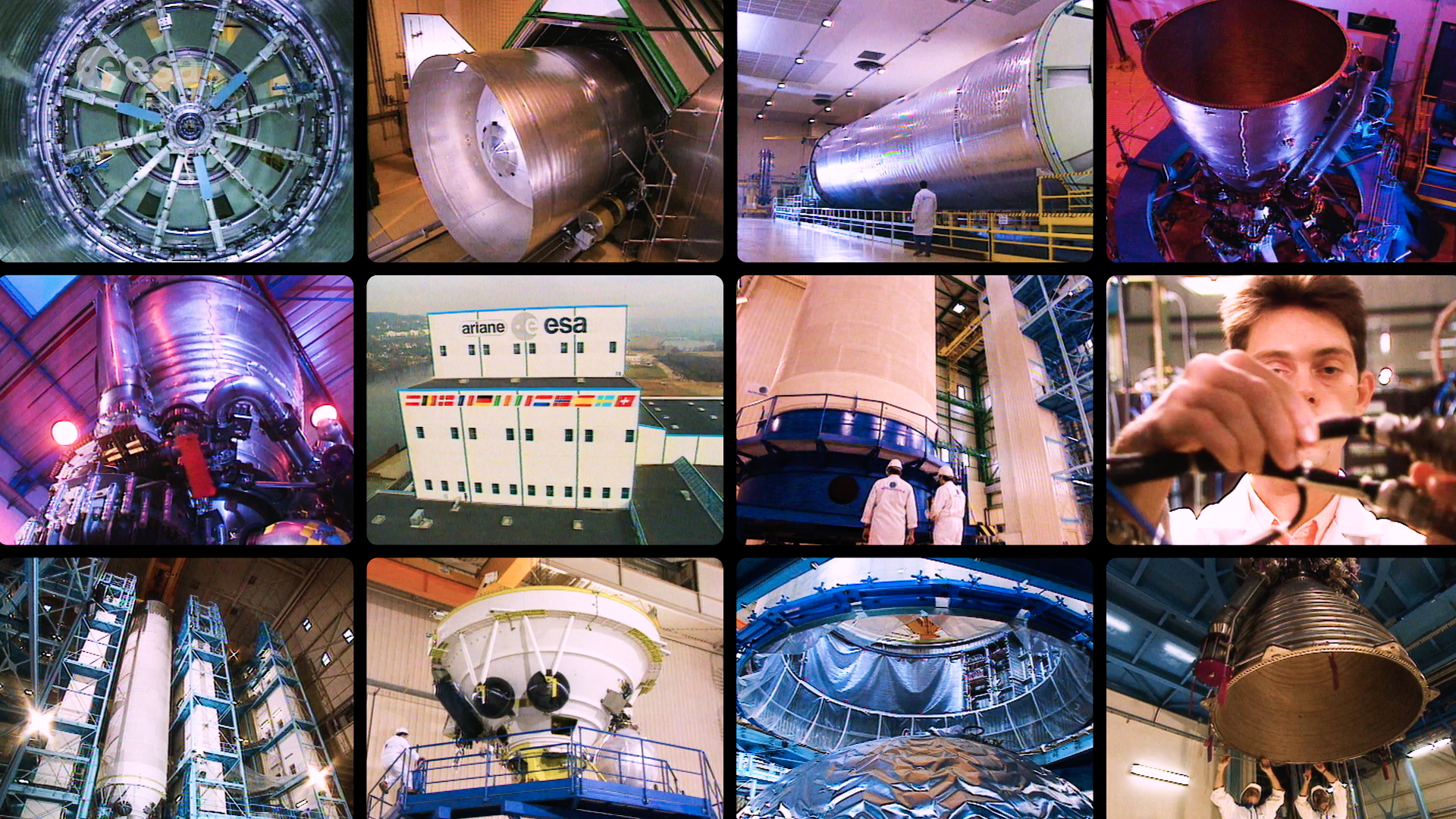
Access the video
The Ariane 5 launch log includes 16 Ariane 5 G, 3 Ariane 5 G+, 6 Ariane 5 GS, 8 Ariane 5 ES and 84 Ariane 5 ECA flights; the final Ariane 5 flight, VA261, was on 6 July 2023 bringing the total to 117 launches.














 Germany
Germany
 Austria
Austria
 Belgium
Belgium
 Denmark
Denmark
 Spain
Spain
 Estonia
Estonia
 Finland
Finland
 France
France
 Greece
Greece
 Hungary
Hungary
 Ireland
Ireland
 Italy
Italy
 Luxembourg
Luxembourg
 Norway
Norway
 The Netherlands
The Netherlands
 Poland
Poland
 Portugal
Portugal
 Czechia
Czechia
 Romania
Romania
 United Kingdom
United Kingdom
 Slovenia
Slovenia
 Sweden
Sweden
 Switzerland
Switzerland


























